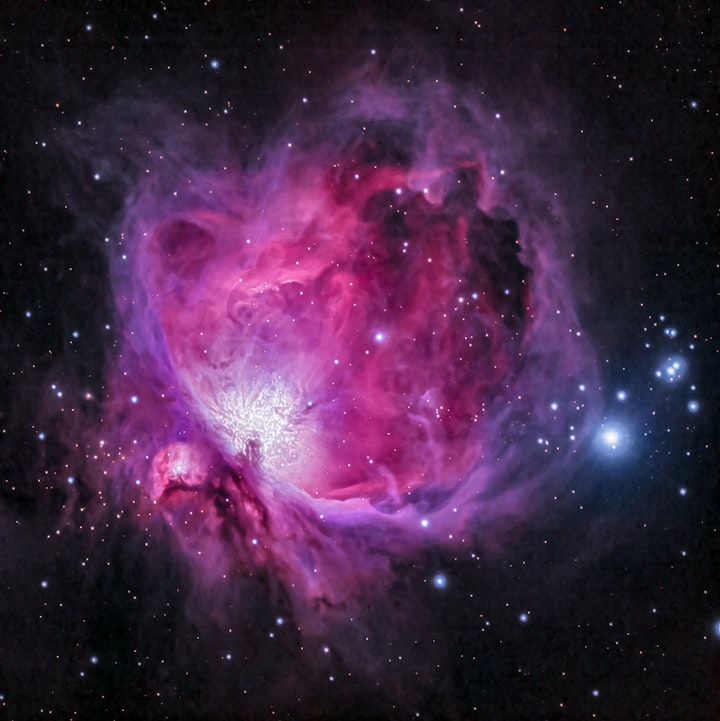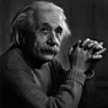General Relativity
Unveiling the Secrets of the Cosmos

General relativity, formulated by Albert Einstein in the early 20th century, revolutionized our understanding of gravity, space, and time. This theory provided a profound shift in our perception of the universe, revealing a dynamic interplay between mass, energy, and the fabric of spacetime. In this essay, we will explore the key concepts and implications of general relativity, delving into the nature of gravity, the curvature of spacetime, and its remarkable predictions that have been validated by numerous experiments and observations.
Historical Background
To comprehend the significance of general relativity, we must examine the historical context in which it emerged. The scientific community had long sought a unified theory of gravity that could encompass the macroscopic and microscopic scales. Einstein's theory built upon the foundations laid by Isaac Newton's law of universal gravitation and his own theory of special relativity, which described the behavior of objects moving at constant velocities. General relativity emerged as the culmination of Einstein's relentless pursuit to harmonize these principles into a comprehensive framework.
The Essence of General Relativity
General relativity proposes that gravity arises due to the curvature of spacetime caused by mass and energy. According to this theory, massive objects, such as planets or stars, create a curvature in the fabric of spacetime around them. Other objects, including particles and light, move along paths dictated by this curvature, giving the illusion of gravitational attraction. In other words, gravity is not a force transmitted through space; instead, it arises from the geometry of spacetime itself.
The mathematical formulation of general relativity involves Einstein's field equations, which relate the curvature of spacetime to the distribution of matter and energy within it. These equations describe the behavior of gravity in terms of the metric tensor, which encapsulates the geometry of spacetime. The curvature of spacetime is determined by the distribution of mass and energy, and objects follow geodesics, the paths of least resistance, in this curved spacetime.
One of the most intriguing aspects of general relativity is the prediction of gravitational time dilation. Due to the curvature of spacetime near massive objects, time runs slower in regions of stronger gravity. This phenomenon has been verified through experiments and observations, such as the Pound-Rebka experiment and the gravitational redshift of light from distant galaxies.
General relativity also predicts the existence of black holes, regions of spacetime where gravity is so intense that nothing, not even light, can escape. The concept of black holes has been corroborated by various observations, including the recent direct detection of gravitational waves, ripples in spacetime caused by the merger of black holes. These discoveries have revolutionized our understanding of extreme gravitational phenomena and opened up new avenues for studying the universe.
Experimental Validation
General relativity has successfully withstood numerous experimental tests, solidifying its status as a cornerstone of modern physics. One of the earliest confirmations came during the 1919 solar eclipse expedition, when the bending of starlight around the Sun was observed, as predicted by general relativity. This observation confirmed the curvature of spacetime by massive objects and marked a significant triumph for the theory.
Another notable experimental validation is the precision measurement of the precession of Mercury's orbit. Newton's laws of gravitation failed to fully account for this discrepancy, but general relativity accurately predicted the observed precession, providing further evidence for the validity of the theory.
Furthermore, the phenomenon of gravitational lensing, where the path of light is bent by massive objects, has been observed and studied extensively. Gravitational lensing has been used to magnify and distort the light from distant galaxies, providing insights into their structure and the distribution of dark matter.
In recent years, the direct detection of gravitational waves by the Laser Interferometer Gravitational-Wave Observatory (LIGO) has offered compelling evidence for general relativity. These ripples in spacetime, generated by cataclysmic events such as the merger of black holes or neutron stars, have been detected and matched precisely with the predictions of general relativity.
Implications and Applications
General relativity has far-reaching implications beyond the realm of gravity. It has paved the way for modern cosmology, explaining the expansion of the universe through the theory of cosmic inflation. Inflationary cosmology posits that the universe underwent a rapid expansion in its early stages, explaining the observed uniformity of the cosmic microwave background radiation and the large-scale structure of the universe.
Black holes, enigmatic objects predicted by general relativity, have been observed and studied extensively, illuminating our understanding of extreme gravitational phenomena. They have provided insights into the nature of spacetime near these cosmic behemoths and have raised intriguing questions about the nature of information and the fundamental limits of our knowledge.
Additionally, general relativity plays a crucial role in the Global Positioning System (GPS) and other technological advancements that rely on precise measurements of time and space. The accurate determination of positions and timings in GPS satellites requires the incorporation of general relativity's corrections due to the curvature of spacetime and the time dilation caused by Earth's gravitational field.
Conclusion
General relativity stands as one of the most influential theories in physics, revolutionizing our understanding of the universe. Its elegant description of gravity as the curvature of spacetime has been validated by extensive experimental evidence. From revealing the secrets of black holes to explaining the expansion of the cosmos, general relativity continues to shape our scientific endeavors and push the boundaries of human knowledge.
The experimental verifications of general relativity, such as the bending of starlight, the precision measurement of planetary orbits, the observations of gravitational lensing, and the detection of gravitational waves, have provided compelling evidence for the theory's validity. Moreover, general relativity's implications extend beyond gravity, influencing cosmology, astrophysics, and technological applications.
As we continue to explore the mysteries of the universe, general relativity remains a fundamental pillar upon which our understanding is built. It stands as a testament to human curiosity, innovation, and the power of theoretical insights to unlock the secrets of the cosmos.
About the Creator
John memon
I Just like to write............






Comments
There are no comments for this story
Be the first to respond and start the conversation.